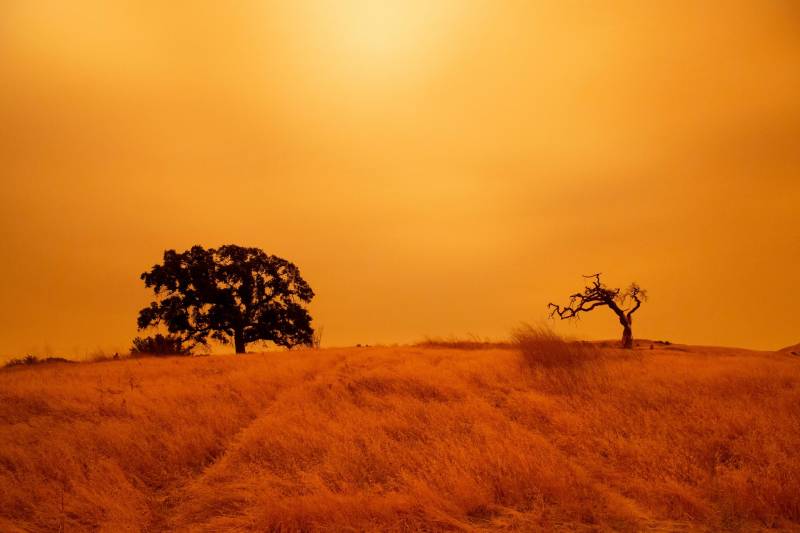Hundreds of wildfires have scorched over 3 million acres in California this year. That’s the most burned land for any year on record in the state, and we’re still only about halfway through the fire season.
Smoke from those fires polluted the air in the Bay Area for 30 straight days in August and September, prompting the Bay Area Air Quality Management District to issue the longest consecutive string of “Spare the Air” alerts in its history, more than doubling the previous record of 14, set during the Camp Fire in November 2018. Within the recent period of smoke inundation came the six worst air quality days in the Bay Area in 20 years.
“Smoke is everywhere,” Wayne Kino, a pollution control officer with the regional air district, told the agency’s board last week. “Smoke generated at the fires, smoke lingering out at the ocean, is coming in. It’s some of the worst air quality we’ve experienced.”
Emergency room doctors at Sutter’s Alta Bates Summit Medical Center in Oakland have begun to see patients sickened by the smoke, reporting a flare-up in asthma and emphysema-related admissions.
“We’re starting to see a cumulative effect,” said Ronn Berrol, medical director of Alta Bates’ emergency department. “Our numbers are going up — respiratory, throat irritation, coughing, chest pain, heart palpitations. A real gamut of things; the uptick is definitely noticeable.”
In the South Bay, Dr. Mary Prunicki, director of air pollution and health research at Stanford’s allergy and asthma research center, analyzed hospital records during the fires and found admissions of patients with asthma attacks up 10%. For people with stroke-like symptoms, the increase was 23%, including 43% for seniors.
“This is the first time the Bay Area has ever really experienced something like this,” Prunicki said, about the persistently degraded air quality, which she described as “remarkably bad.”

